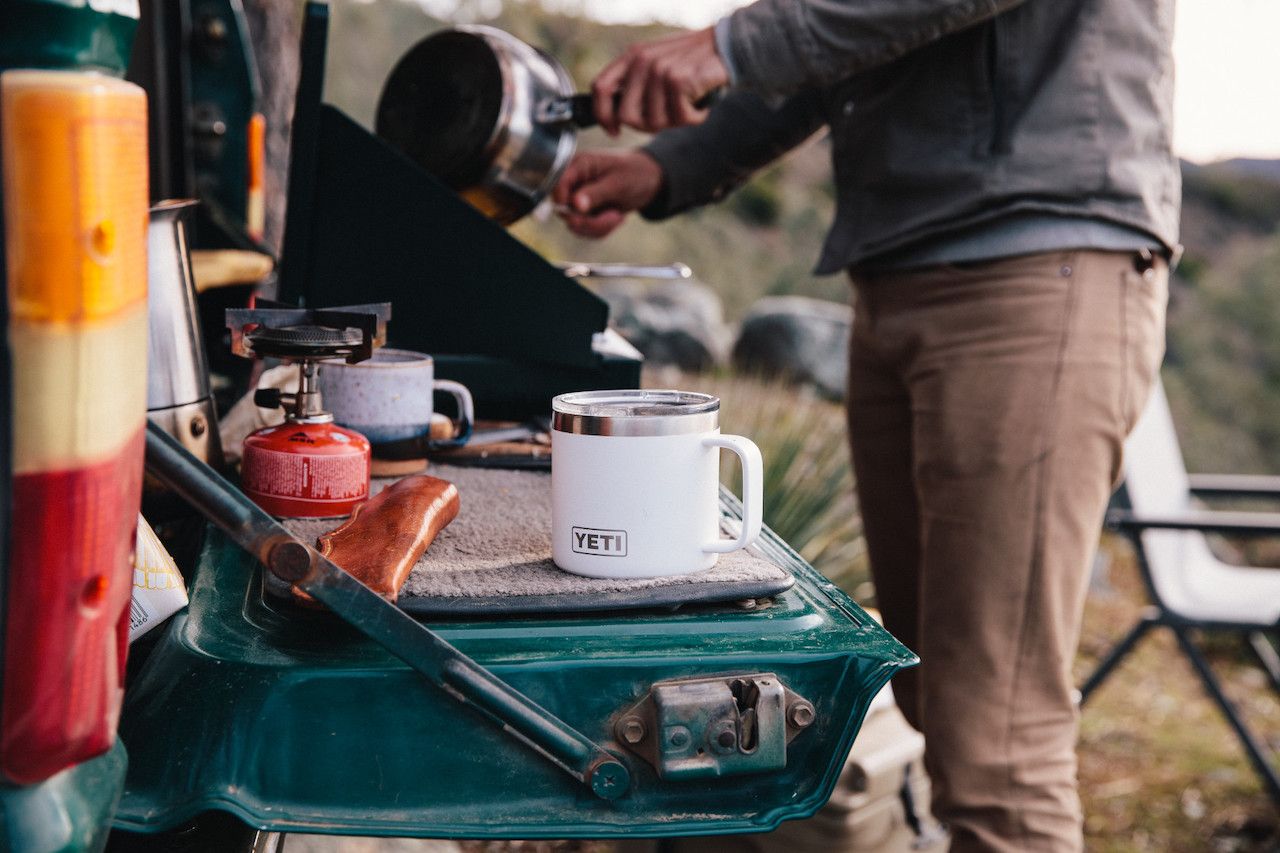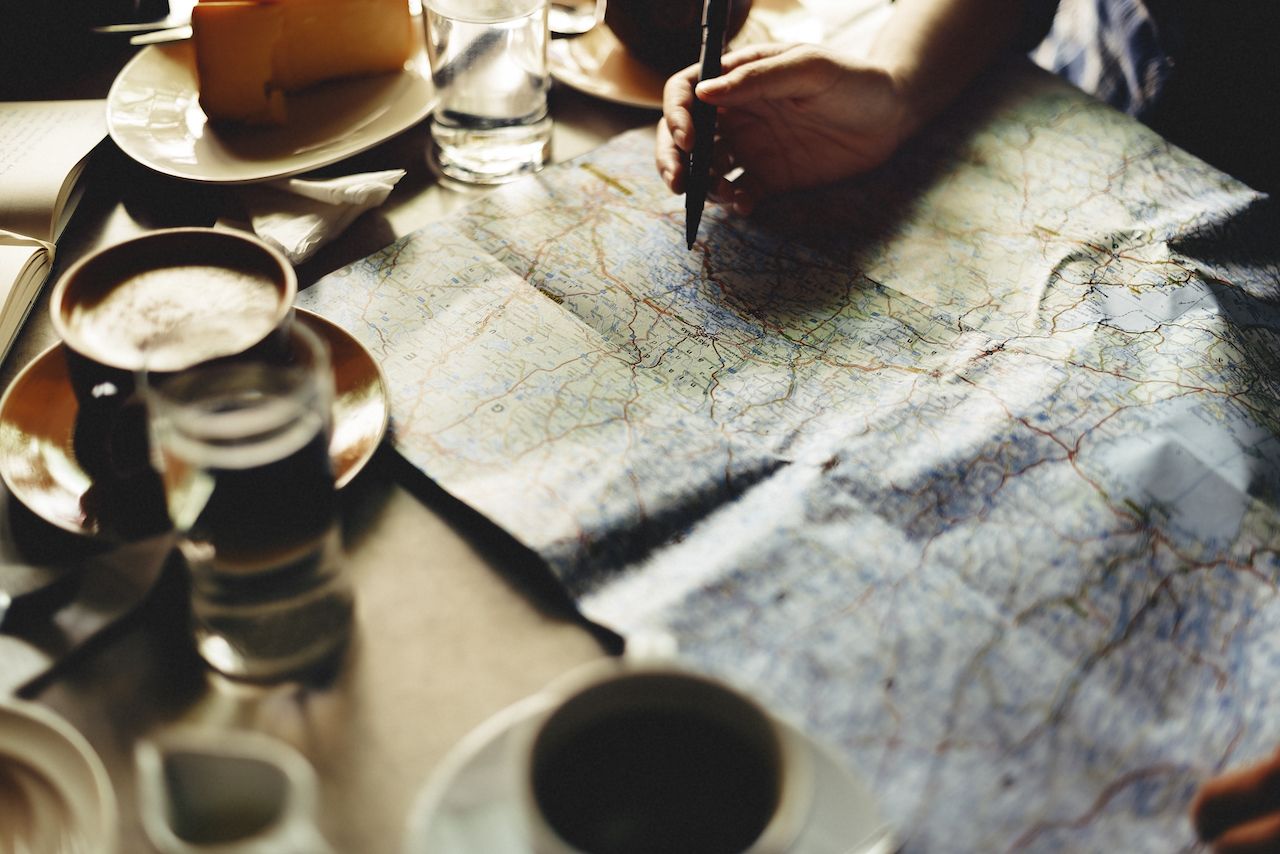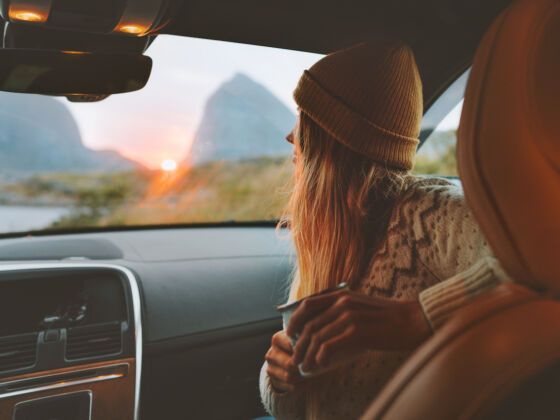If there’s one thing the pandemic has put a spotlight on this year, it’s the impact of the individual. Each of us matters. Our movements, how we live, what we do, who we choose to be with — each of us affects the larger world around us.
How we travel matters, too. If even 25% of the people reading this article committed to traveling sustainably, the entire industry would shake — and the Earth would breathe a small sigh of relief. Since this is the year of the road trip, here’s how to make that happen, starting with yourself.
How you get around

Photo: Shutterstock/Merla
Here’s the goal: Make your vehicle as fuel-efficient as possible. Before you set out on your trip, hit up the mechanic. More air in your tires, an oil change, a new air filter — all these things help increase your vehicle’s fuel efficiency.
When you’re on the road, take advantage of cruise control on flat stretches, limit your A/C usage, plan out your route for maximum efficiency, and try to avoid storing cargo on your roof rack — weight up there increases your drag, lowers your miles-per-gallon, and mandates fuel stops sooner than anyone would like.
Note: Car travel, unless it’s fully electric, isn’t exactly great for the environment. To mitigate the climate cost, consider purchasing carbon offsets, just like you might for a flight.
How you eat & drink

Photo: YETI
The name of the game is bring it with you. Apart from your go-to reusable water bottle (and coffee Rambler, natch), bring a few large — at least one-gallon — containers for all your H2O needs. You can refill them at gas stations, convenience stores, rest stops, and the like. That way, you’re never tempted to buy a bottle of water, and you can rinse out any reusable products as needed.
When it comes to snacks and meals, the same principles apply. Before you leave, deck yourself out with goodies prepackaged into zero-waste containers. Bring bamboo silverware, metal straws, and reusable napkins. Have a storage container for your recyclables, and don’t forget the reusable bags for when you have to stop and shop — where you’ll ideally buy in bulk to limit single-use plastic. Gas station food is a certain kind of tasty and a definite kind of convenient, sure, but local farmers markets, bulk-food sections, and unpackaged goods come with a cleaner conscience.
Depending on the length of your trip, you may bring a lot of food with you. A sturdy cooler is great if this is the case — you’re looking at days of ice with something like the YETI Roadie 24 Hard Cooler, allowing you to pack just about anything. Or, if you’re watching your haul’s weight, a soft-sided cooler may be in order, such as the Hopper M30. They’re surprisingly effective, and smaller ones pack way, way down when not in use.
Note: If you need a break from cooking and find yourself at a local restaurant, bring your own to-go containers. Or choose a place that does the eco-friendly work for you — apps like NoshPlanet make finding green restaurants easy.
How you pack

Photo: M. Shaw / YETI
When you limit yourself to certain eco-conscious products, packing actually gets easier. As to what makes the cut, keep these basic features in mind:
Long-lasting
That old styrofoam cooler definitely works in a pinch for your road-trip snacks, but if it’s gonna kick the bucket halfway through your trip — or worse, start leaking — you’re going to end up tossing it. Where your budget can afford, upgrade. Quality products that last are always more environmentally friendly than anything you have to purchase twice.
Non-toxic
Your toiletries matter — you could be washing toxic chemicals down the drain, potentially harming wildlife and polluting local waterways. Do five minutes of easy research, and load up on products that are natural. (Of course, these are great for home use, too!)
Solar / rechargeable
Traditional batteries — when will we live in a world that doesn’t need them? Soon, that’s when. Wherever you can, go solar or rechargeable. Batteries, believe it or not, release greenhouse gases as they decompose.
Recyclable
At the end of the day, some things just aren’t reusable anymore. But hopefully, that’s when they’re recyclable. Compress them, break them up, and store them in your designated recycling container until you find a drop-off spot. Which is easy — tons of apps address this very need.
How you plan

Photo: Shutterstock/Rawpixel.com
Diligently and well in advance, that’s how. Ultimately, sustainable travel all comes down to this key point: You’ll need to plan the most efficient route to limit fuel consumption, plan your meals in advance to reduce your trash, plan what items you’ll need and what products you’ll use so you don’t wind up making needless purchases or reaching for the rubbish bin. If you plan your impact, you can limit your impact.
The idea, in the end, is to Leave No Trace — whether that means producing no waste or sticking to the designated trails, it’s all the same. Ultimately, it’s about being a friend to the road, the land, the wildlife, and the globe.

